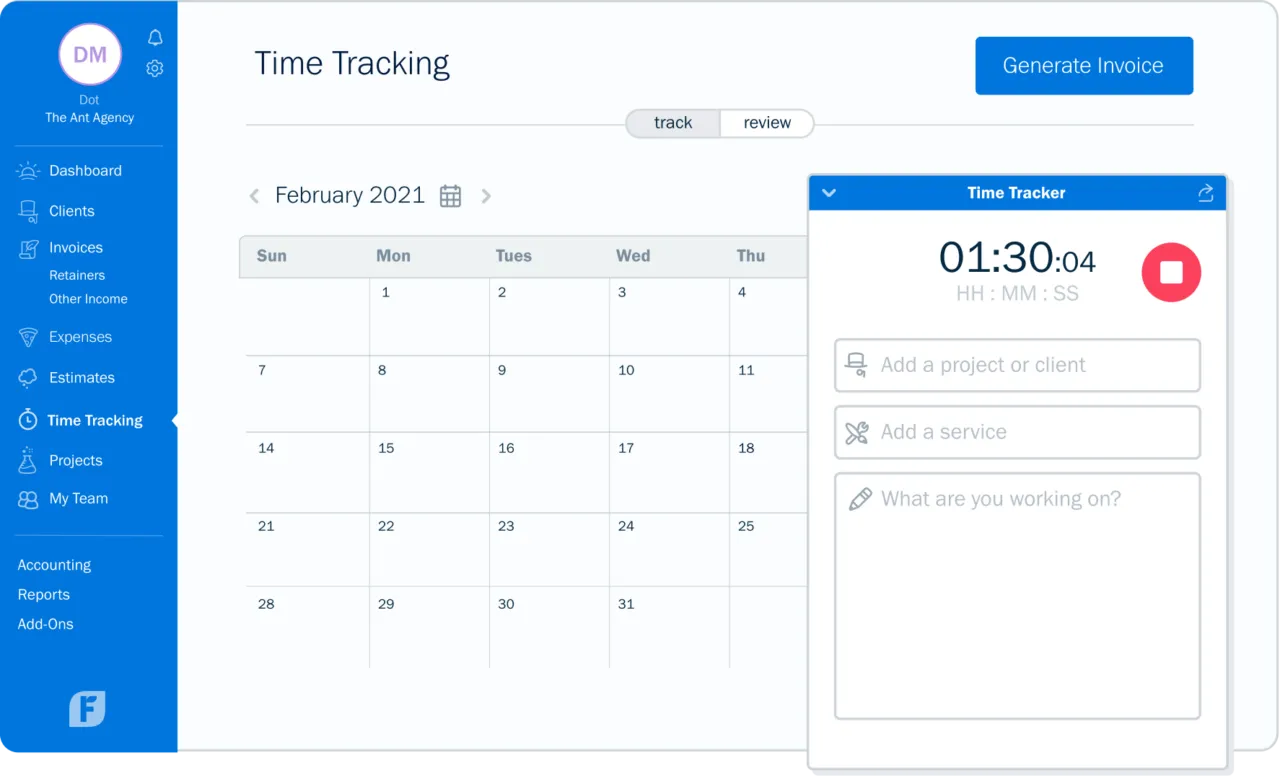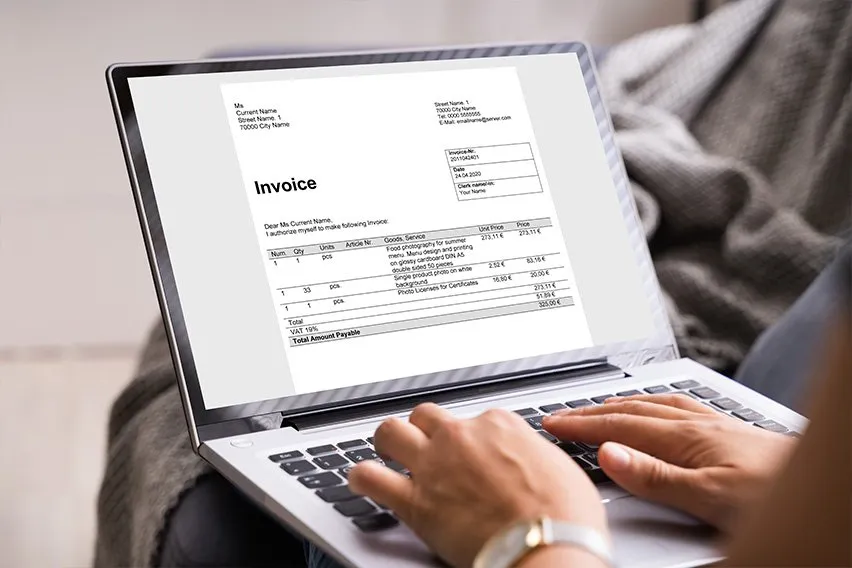Flat Rate vs Hourly Rate: What Should You Choose?

The difference between a flat rate pay and an hourly rate pay is how you bill the client. For a flat rate pay system, you’re paid a set price for the job. In contrast, hourly rate pay is based on the amount of time you work, which means you’re paid a set amount for each hour of work.
Whether you’re self-employed or run your small business, there’s a price structure to consider. Each pricing structure has its advantages and disadvantages, and it’s important to consider which billing method works better for you and the client.
What this article covers:
Flat Rate vs Hourly Rate: Pros and Cons
What Is Flat Rate Pay?
A flat rate pay system is when you charge the client a set price for the scope of work that is completed regardless of the number of tasks required to complete the project. Flat rates are ideal for projects with finite deliverables and a well-defined scope of work. Clients can make payments at regular intervals based on the work completed.
- To calculate the flat rate, take the number of hours a project will take to complete and multiply it by your hourly rate.
- In other cases, there are set prices for specific jobs, and the value of the project may be considerably more than the estimated hours needed to complete it.
- The prices of projects can also be set on perceived value.
The benefit of flat rate billing for clients is that they know the amount they have to pay for the project beforehand, so there is little room for dispute.

What Is an Hourly Fee?
Hourly rate is the price that you charge per hour for a project. To bill clients by the hour, you need to track the hours you’ve spent working for the client and bill at the end of the project or an agreed-upon cycle.
Charging clients an hourly fee is effective for long-term projects which are prone to changes. It works best when you work for the client in-house. If you’re working remotely, hourly billing can be challenging. However, it makes it easier for you to account for changes in the project.
Put your focus on your work, not the clock. With FreshBooks Time Tracker, all you need to do is set a timer and then get the job started. Our tracker lets you see how much time you’re spending on various clients and projects, and when it’s all said and done, you can create an invoice with the click of a button. Try the Time Tracker on your desktop or mobile, and rest easy knowing FreshBooks has you covered. Click here to try FreshBooks for free.

Flat Rate vs Hourly Rate: Pros and Cons
Flat and hourly rates each have their own pros and cons. It’s important to decide which is best for your billing process, although some clients might prefer flat rate systems over hourly pay.
Flat Pay Rate: Pros
- Flat rates or project rates reward above-average productivity for freelancers who complete the work on time. If you’re quick and finish tasks faster than estimated, the time you save means more profit for you.
- Flat rates are easier for the clients to understand as they know exactly what they have to pay for. This means you can set the prices based on the scope of work and accommodate the client’s budget for specific projects.
- Using an hourly rate pay system can cause personal stress because you need to keep detailed accounts.
Flat Pay Rate: Cons
- If you’re a newbie, it’s difficult to estimate the project rate. Unless the estimate is accurate and the scope never changes, there’s a huge risk of losing money on a project.
- Certain clients insist on hourly invoicing.
- Flat rate work can open you up to negotiating and haggling with clients over prices.
- For charging a flat rate, you need a solid portfolio and references that show you are worth the rate.

Hourly Pay Rate: Pros
- Billing hourly makes it easy to account for variables and changes in projects.
- Hourly pay rates provide a baseline for clients to compare work.
- An hourly rate is best for long-term projects and clients rather than short, sporadic jobs.
Hourly Pay Rate: Cons
- It’s difficult to know what you can count towards hourly rates and general expenses like travel time or phone bills. You’ll have to set rates and hours that are consistent.
- Hourly rates limit your income as you’re not guaranteed a minimum payment for the project. Moreover, you’re not paid for your project’s value to the client. For example, a logo design may take just five hours, but its value to a business may be higher.
There are advantages and disadvantages to both flat-rate pay systems and hourly pay rate systems. You need to evaluate your preferences and the client’s requirements while choosing a billing method. Most freelancers use a mix of hourly rate and fixed pay rates for different projects.
Conclusion
A flat rate system is when you charge the client a set price for a project regardless of the number of tasks or hours required, and these systems work well when the job can be done efficiently. However, a solid portfolio is typically required to use this pay structure.
An hourly rate is a price you charge per hour for a project by tracking the hours worked. After the work is completed, you send out a bill. Hourly rates can help hedge risk from project variables but can limit your income potential.
FAQs on Flat Rate vs Hourly
Which is better, a flat rate or an hourly rate?
One isn’t inherently better than the other. Both the flat rate and hourly billing models have advantages and disadvantages. Which is best for you will depend on your scope of work, personal preferences, and client requirements.
What is the difference between a flat rate and a standard rate?
The difference between a flat rate and a standard rate is the risk involved in each. For a flat rate, the risk of “scope creep” — a project going over the agreed amount — is shifted to the seller. With a standard rate, the risk is shifted to the customer.
Are tips better than hourly rate pay?
It’s great to receive tips, but they aren’t necessarily better than an hourly wage. An hourly wage guarantees payment for work completed and doesn’t fluctuate during slow periods. Plus, tips aren’t guaranteed. If you receive tips, don’t forget that they’re taxable.
When should you use flat rate pricing and when should you use hourly rate pricing?
Flat rate pricing is typically used when the scope of work is well defined and the time required to complete the task can be estimated accurately. Hourly rate pricing is used when the scope of work is not clearly defined, the project may have unknown variables, or the customer prefers more flexible pricing.
Is flat rate pricing always more expensive than hourly rate pricing?
Flat rate pricing is not always more expensive than hourly rate pricing. It depends on the scope of work and the time required to complete the task.
Reviewed by
Jason Ding is a seasoned accountant with over 15 years of progressive experience in senior finance and accounting across multiple industries. Jason holds a BBA from Simon Fraser University and is a designated CPA. Jason’s firm, Notion CPA, is an accounting firm with a business-first focus. The firm specializes in preparing personal and corporate taxation while providing fractional CFO work and leading the accounting and finance function for several small-to-medium-sized businesses. In his free time, you’ll find Jason on the basketball court, travelling, and spending quality time with family.
RELATED ARTICLES


 How to Invoice for Hourly Work
How to Invoice for Hourly Work How to Invoice as a Sole Trader: Guide and Example
How to Invoice as a Sole Trader: Guide and Example How to Prepare A Tax Invoice: The Step-By-Step Process
How to Prepare A Tax Invoice: The Step-By-Step Process What Is a Self-Billing Invoice?
What Is a Self-Billing Invoice? Proforma Invoice: Definition, Uses and Template
Proforma Invoice: Definition, Uses and Template What Is a Tax Invoice?
What Is a Tax Invoice?